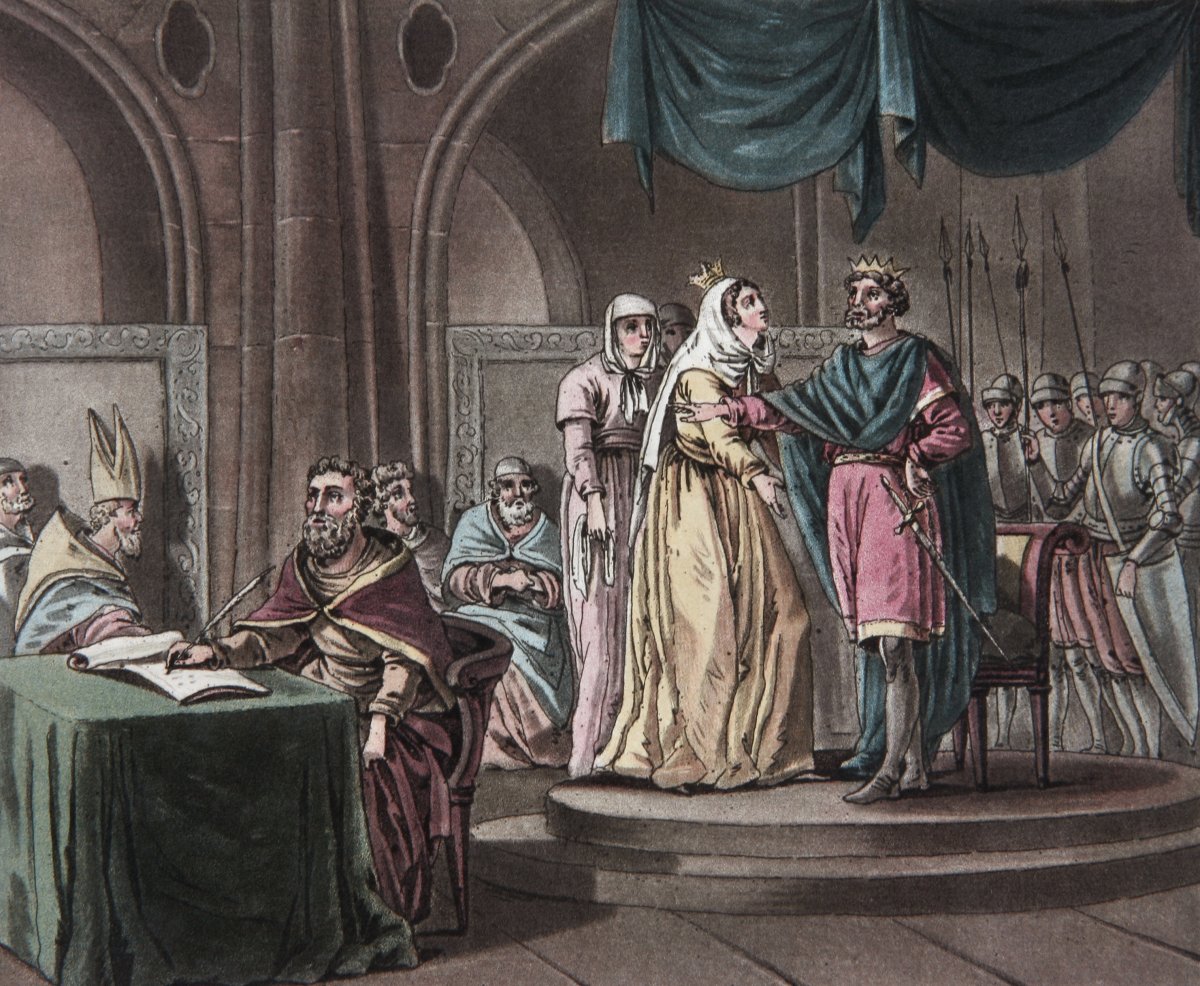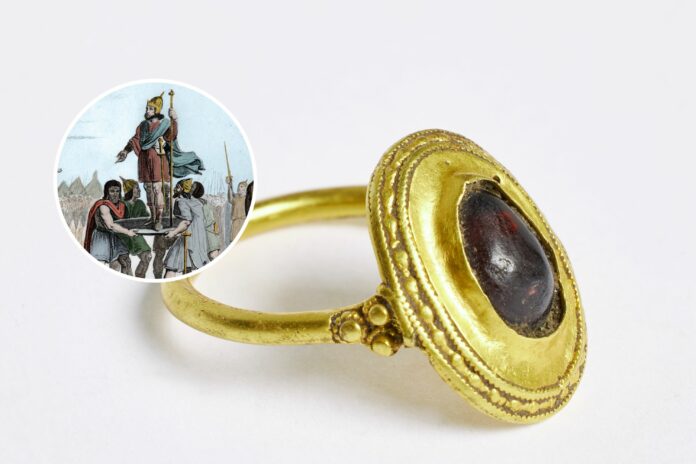A gold ring that may have belonged to a princess has been discovered in Denmark.
The rare ring is thought to date to around the 5th to 6th centuries, and was found in the vicinity of other artifacts, including golden horns.
The ring, which is set with a red semi-precious stone—a symbol of power in the Nordic kingdoms of old—is thought to have belonged to a previously unknown family of nobles or royals, who may have held power in southwest Jutland.
The National Museum / Stefano Bianchetti/Corbis via Getty Images
The ring points to connections with the Merovingians, as it is similar to jewelry associated with the famous dynasty. The Merovingians were Frankish kings who ruled over what is now France, Belgium, the Netherlands, Luxembourg and parts of Germany from the fifth to the eighth centuries.
King Clovis I is one of the most famous Merovingians, as he converted to Christianity and established himself as the first king to unite all the Frankish tribes under one rule, significantly impacting the course of European history. Merovingian power declined over time, and they were eventually replaced by the Carolingian dynasty, which was founded by Charlemagne in the eighth century.
“The gold ring is probably a woman’s ring and may have belonged to a prince’s daughter who was married to a prince in Emmerlev,” Kirstine Pommergaard, a curator at the National Museum of Denmark who examined the new find, said in a statement.
“Gold was a typical diplomatic gift, and we know that people formed alliances by marriage,” Pommergaard said.
She cited the example of the 10th-century Danish king Gorm the Old and his wife Thyra and in more recent times Christian IX, who ruled Denmark from 1863 to 1906. He became known as “Europe’s father-in-law” for marrying his daughters into various royal houses. Among his descendants are King Philippe of Belgium, King Charles III of the United Kingdom and King Felipe VI of Spain.
The ring was found by 39-year-old Lars Nielsen in Emmerlev in southwest Jutland, who was thrilled at his discovery.
“I was so excited and overwhelmed that I could hardly say anything, and that’s not usually something that characterizes me, but it is without a doubt my best find so far,” Nielsen said in the statement. “To make such a unique and one-of-a-kind find is completely surreal. I am very proud and honored to be able to contribute a piece to our shared history both locally and nationally.”
The ring was found to have delicate spirals on its underside and other details that connect it to the Franks and therefore the Merovingians
“It is an impressive level of craftsmanship that is difficult to imitate today,” Pommergaard said.
Other treasures have also been found near where the ring was discovered, including two gold coins, seven silver coins (sceattas) and Frisian-turned pottery. These further hint at a Merovingian connection. Only six miles away, a set of gold horns from the 4th century were also found.
“The person who had the ring probably also knew about the people who had the golden horns. Maybe they were related,” Anders Hartvig of Museum Sønderjylland, said in the statement. “Together with other recent finds, it paints a picture that southern Jutland had a greater influence than previously thought, and that the Wadden Sea (an intertidal zone in the southeastern part of the North Sea) was not closed in on itself, but had an aristocratic presence with important trade links to the south.”
The gold ring was originally at Museum Sønderjylland, but has now been handed over to the National Museum in Copenhagen.

adoc-photos/Corbis via Getty Images
“The Merovingians were interested in entering into a network with families and individuals who could control trade and resources in an area,” Pommergaard said. “Perhaps the princely family in Emmerlev had control over an area between Ribe and Hedeby and thus secured trade in the area.”
Nielsen gave his wife a replica of the gold ring for Christmas, hoping to preserve its unique story through his own family line.
“Hopefully, it will be passed down in the family, who will in future be able to identify where it was found and look at the letter from the National Museum, which describes the ring’s special history and significance,” he said.
Do you have a tip on a science story that Newsweek should be covering? Do you have a question about archaeology? Let us know via [email protected].
Uncommon Knowledge
Newsweek is committed to challenging conventional wisdom and finding connections in the search for common ground.
Newsweek is committed to challenging conventional wisdom and finding connections in the search for common ground.


